
Sun-Kissed Splendor at Jan Thiel Beach
Discover the serene beauty of Jan Thiel Beach in Curacao, where crystal-clear waters, vibrant marine life, and world-class amenities await you.
Jan Thiel Beach in Curacao is a tropical paradise that offers something for every kind of traveler. Nestled on the southeastern coast of the island, this beach is known for its crystal-clear waters and soft, white sand. Whether you love to sunbathe, snorkel, or simply relax with a good book, Jan Thiel Beach is the perfect spot to unwind and soak up the Caribbean sun. The beach is surrounded by lush, green palm trees and a variety of amenities that make it a convenient and enjoyable destination. You can find a range of restaurants and bars serving delicious local cuisine and refreshing cocktails. For the adventurous, there are plenty of water sports activities available, from paddleboarding to diving excursions. The underwater world here is teeming with vibrant coral reefs and colorful marine life, making it a haven for snorkelers and divers alike. Jan Thiel Beach is also a great place for families. The calm, shallow waters are ideal for children to play in, and there are plenty of shaded areas where parents can relax. In the evenings, the beach transforms into a lively hub with music, dancing, and beachside dining, offering a perfect end to a day in paradise.
Local tips in Jan Thiel Beach
- Arrive early to secure a good spot on the beach, especially on weekends.
- Bring cash as some local vendors may not accept credit cards.
- Don't forget your snorkeling gear to explore the stunning coral reefs.
- Stay hydrated and apply sunscreen regularly; the Caribbean sun can be intense.
- Check out the local restaurants for a taste of authentic Curacao cuisine.
Sun-Kissed Splendor at Jan Thiel Beach
Jan Thiel Beach in Curacao is a tropical paradise that offers something for every kind of traveler. Nestled on the southeastern coast of the island, this beach is known for its crystal-clear waters and soft, white sand. Whether you love to sunbathe, snorkel, or simply relax with a good book, Jan Thiel Beach is the perfect spot to unwind and soak up the Caribbean sun. The beach is surrounded by lush, green palm trees and a variety of amenities that make it a convenient and enjoyable destination. You can find a range of restaurants and bars serving delicious local cuisine and refreshing cocktails. For the adventurous, there are plenty of water sports activities available, from paddleboarding to diving excursions. The underwater world here is teeming with vibrant coral reefs and colorful marine life, making it a haven for snorkelers and divers alike. Jan Thiel Beach is also a great place for families. The calm, shallow waters are ideal for children to play in, and there are plenty of shaded areas where parents can relax. In the evenings, the beach transforms into a lively hub with music, dancing, and beachside dining, offering a perfect end to a day in paradise.
When is the best time to go to Jan Thiel Beach?
Iconic landmarks you can’t miss
Queen Emma Bridge
Experience the historic charm of Queen Emma Bridge in Willemstad, Curaçao – a floating marvel connecting vibrant cultures and stunning views.

Mambo Beach
Experience the vibrant atmosphere and stunning beauty of Mambo Beach in Willemstad, Curaçao, a perfect blend of relaxation and adventure.

Cas Abao Beach
Discover the stunning beauty of Cas Abao Beach in Curaçao, where pristine sands meet turquoise waters, perfect for relaxation and adventure.

Curaçao Sea Aquarium
Discover the vibrant marine life and conservation efforts at Curaçao Sea Aquarium, an unforgettable attraction for travelers seeking adventure and education.

Mambo Beach Boulevard
Discover Mambo Beach Boulevard: Curaçao's premier destination for shopping, dining, and vibrant nightlife, all set against stunning Caribbean views.

Kokomo Beach
Discover Kokomo Beach in Willemstad, Curaçao, where pristine shores, lively ambiance, and delicious cuisine await every traveler seeking the perfect tropical escape.

Zanzibar Beach & Restaurant
Experience the vibrant atmosphere and stunning views at Zanzibar Beach & Restaurant, a delightful culinary destination in Jan Thiel, Curaçao.

Landhuis Chobolobo
Experience the rich heritage of Curaçao at Landhuis Chobolobo, home of the famous Blue Curaçao liqueur, with delightful tours and tastings.
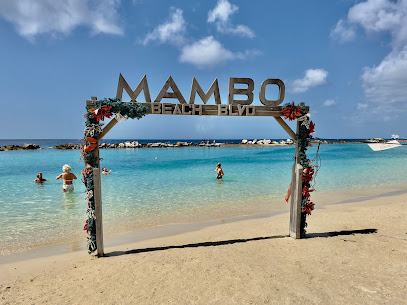
Pirate Bay Curaçao Beach Club and Restaurant
Discover the vibrant atmosphere of Pirate Bay Curaçao Beach Club: where delicious food meets stunning ocean views and unforgettable beach fun.

Hato Caves
Discover the enchanting Hato Caves in Curaçao, a natural wonder filled with stunning formations, ancient history, and breathtaking beauty.

Livingstone Jan Thiel Resort
Experience luxury and relaxation at Livingstone Jan Thiel Resort in Curaçao, your gateway to stunning beaches and vibrant local culture.

Chogogo Dive & Beach Resort Curacao
Discover tranquility and adventure at Chogogo Dive & Beach Resort in Jan Thiel, Curacao, where stunning beaches meet vibrant underwater worlds.

Shete Boka National Park
Explore the breathtaking landscapes of Shete Boka National Park in Curaçao, where rugged cliffs meet the roaring sea and nature thrives.

Fort Nassau
Experience the rich flavors of Caribbean cuisine at Fort Nassau, where history meets culinary excellence and stunning views in Willemstad, Curaçao.

Irie Tours
Experience the best of Curaçao with Irie Tours, your gateway to stunning landscapes, rich culture, and unforgettable adventures.
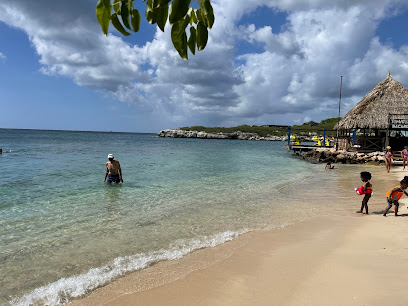
Unmissable attractions to see
Cas Abao Beach
Discover the tranquil beauty of Cas Abao Beach, a tropical paradise in Curaçao known for its clear waters and vibrant marine life.

Curaçao Sea Aquarium
Explore the vibrant marine life at Curaçao Sea Aquarium, an interactive adventure in Willemstad showcasing the beauty of the Caribbean Sea.

Old Market
Discover the rich flavors and vibrant culture of Willemstad at the Old Market, a must-visit destination for every traveler in Curaçao.

Christoffel National Park
Discover the breathtaking landscapes and rich biodiversity of Christoffel National Park in Curaçao, a paradise for nature lovers and adventure seekers.

Flamingos
Experience the enchanting world of Flamingos in Curaçao, a paradise for bird watchers and nature lovers amidst stunning landscapes.

Brión Square
Experience the vibrant culture and charm of Curaçao at Brión Square, a colorful plaza in the heart of Willemstad filled with art, food, and local life.

Mikve Israel-Emanuel Synagogue
Explore the Mikve Israel-Emanuel Synagogue in Curaçao, a historical landmark blending culture and spirituality in the heart of Willemstad.

Marie Pampoen Beach
Experience the breathtaking beauty and vibrant culture of Marie Pampoen Beach, the ultimate tropical paradise in Willemstad, Curaçao.

Den Paradera Herb Garden Curaçao by Dinah Veeris
Explore Den Paradera Herb Garden in Willemstad, Curaçao, where the aromatic world of herbs awaits in a tranquil botanical paradise.

Curaçao Sign
Experience the vibrant culture of Curaçao at the iconic Curaçao Sign, a must-visit landmark in Willemstad that captures the island's unique charm.

Lighthouse Klein Curacao
Discover the historic Lighthouse Klein Curacao, a stunning landmark offering breathtaking views and rich maritime history amidst the Caribbean's natural beauty.

Cruise Pier Curaçao
Experience the vibrant atmosphere of Cruise Pier Curaçao, where stunning scenery meets local culture in the heart of Willemstad.

Duikcentrum van de Ven
Explore the vibrant underwater world of Curaçao at Duikcentrum van de Ven, your premier diving center in Jan Thiel.

Tugboat Bar
Discover Tugboat Bar in Willemstad, a charming waterfront spot offering refreshing cocktails and local vibes, perfect for unwinding in paradise.
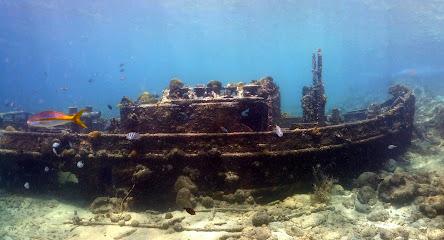
Curaçao Rif Mangrove Park
Discover the serene beauty of Curaçao Rif Mangrove Park, a nature preserve filled with lush mangroves, vibrant wildlife, and peaceful waterways.

Essential places to dine
Zanzibar Beach & Restaurant
Experience exquisite dining with stunning ocean views at Zanzibar Beach & Restaurant in Curaçao - where culinary delights meet tropical tranquility.

Pirate Bay Curaçao Beach Club and Restaurant
Experience culinary bliss at Pirate Bay Curaçao Beach Club and Restaurant, where vibrant flavors meet stunning ocean views.

Brisa Do Mar
Discover Brisa Do Mar in Jan Thiel, Curaçao – where Caribbean flavors meet stunning views for an unforgettable dining experience.

Hemingway
Discover the vibrant flavors and lively atmosphere at Hemingway in Willemstad, Curaçao – a perfect blend of culinary delight and Caribbean charm.

Zest Restaurant& Beach Cafe
Experience exquisite Mediterranean flavors at Zest Restaurant & Beach Cafe while enjoying breathtaking views of Jan Thiel Beach in Curaçao.
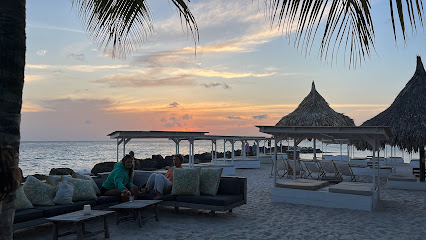
Sea Side Terrace
Discover fresh seafood delights at Sea Side Terrace in Willemstad – where local flavors meet breathtaking ocean views.

Chill Beach Bar & Grill
Experience culinary bliss at Chill Beach Bar & Grill in Curaçao—where delicious food meets stunning ocean views.

MOOD Beach Curacao
Discover culinary delight at MOOD Beach Curacao – where delicious food meets breathtaking ocean views in Willemstad.

Koko's
Discover the flavors of Curaçao at Koko's in Jan Thiel - a must-visit restaurant for every food lover.

Tinto Bar Y Cocina Restaurant
Experience exquisite Caribbean cuisine at Tinto Bar Y Cocina in Jan Thiel, Curaçao – where flavor meets breathtaking views.

Il Forno Caracasbaai
Experience authentic Italian cuisine at Il Forno Caracasbaai in Jan Thiel - where wood-fired pizzas meet Caribbean charm.

The Pier
Discover the taste of Curaçao at The Pier – where every meal comes with stunning sea views and unforgettable flavors.

Bocas Restaurant
Experience the best of Caribbean cuisine at Bocas Restaurant in Curaçao, where fresh seafood meets stunning ocean views.

Papagayo Beach Club
Experience culinary bliss at Papagayo Beach Club - where stunning views meet delicious flavors on Jan Thiel Beach in Curaçao.

Equus
Experience culinary excellence at Equus in Jan Thiel - where local flavors meet international flair in a captivating Caribbean setting.
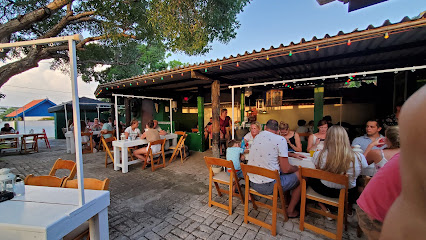
Markets, malls and hidden boutiques
Van den Tweel Supermarket
Discover fresh local produce and international goods at Van den Tweel Supermarket in Jan Thiel, Curaçao – a shopping paradise for culinary enthusiasts.

Jan Thiel Diving Curacao
Discover the underwater wonders of Curacao with Jan Thiel Diving – a premier dive shop for all levels of divers.

Caribbean Handcraft
Explore Caribbean Handcraft in Jan Thiel, Curaçao - a treasure trove of local crafts and unique souvenirs showcasing the island's vibrant culture.

Jewel Junkie Curacao
Explore the exquisite handcrafted jewelry at Jewel Junkie Curacao, where local artistry meets vibrant island spirit.

JOY by OPRA
Explore JOY by OPRA, a vibrant gift shop in Willemstad offering unique local crafts and souvenirs that capture the spirit of Curaçao.

Dulce
Discover Dulce, the ultimate ice cream destination in Jan Thiel, Curaçao, where every scoop is a taste of tropical bliss.

Britt Shop Avila Beach
Discover unique gifts and souvenirs at Britt Shop in Avila Beach, capturing the spirit of Curaçao's vibrant culture.
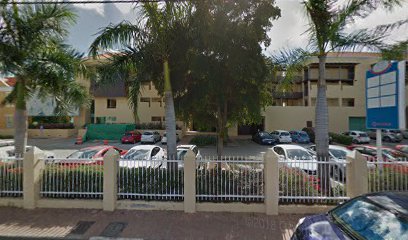
Art-by-Eve
Discover unique handcrafted treasures at Art-by-Eve in Jan Thiel, Curaçao, where local artistry meets the spirit of the Caribbean.
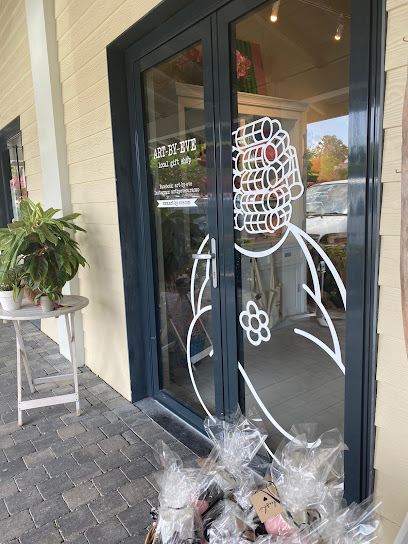
Kos Bon Shop
Discover the vibrant charm of Curaçao at Kos Bon Shop, your go-to destination for unique gifts and local souvenirs.

Hippie
Explore Hippie, a vibrant clothing store at Mambo Beach in Curaçao, offering unique apparel that captures the island's bohemian spirit.

milk. Curaçao
Explore trendy children's fashion at milk. Curaçao, your go-to boutique in Jan Thiel for stylish kids' clothing and accessories.

Zee en Zon Pedicure Curacao
Experience relaxation and rejuvenation at Zee en Zon Pedicure Curacao, your ultimate destination for pampering in Jan Thiel, Curaçao.

Crafted by Angel
Explore the artistic heart of Curaçao at Crafted by Angel, a vibrant gift shop and art gallery filled with local treasures and aromatic delights.

Gerda Gift Shop & Boutique
Explore the vibrant Gerda Gift Shop & Boutique in Willemstad for unique gifts and local crafts that capture the essence of Curaçao.

Out of the Blue
Explore a unique gift shop in Willemstad, Curaçao, featuring handcrafted jewelry and authentic souvenirs reflecting the island's vibrant culture.

Essential bars & hidden hideouts
Zanzibar Beach & Restaurant
Discover the vibrant culinary scene at Zanzibar Beach & Restaurant, where stunning ocean views meet exquisite flavors in Curaçao.
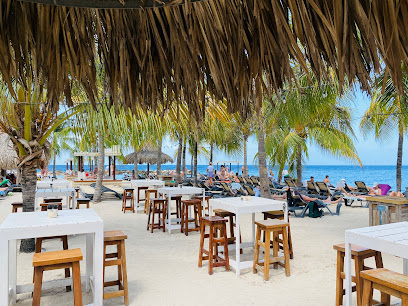
Zest Restaurant& Beach Cafe
Experience Mediterranean delights with stunning ocean views at Zest Restaurant & Beach Cafe in Jan Thiel, Curaçao.

Wet & Wild Beach Club
Experience the vibrant atmosphere of Wet & Wild Beach Club in Willemstad, Curaçao, where relaxation meets tropical fun and unforgettable ocean views await.

Chill Beach Bar & Grill
Experience the vibrant flavors of Caribbean cuisine at Chill Beach Bar & Grill, where stunning ocean views meet a relaxed beach ambiance in Curaçao.

Koko's
Experience the vibrant flavors of Curaçao at Koko's, a beloved restaurant in Jan Thiel offering fresh local cuisine and a stunning beach ambiance.

Tinto Bar Y Cocina Restaurant
Discover the vibrant flavors of Curaçao at Tinto Bar Y Cocina, a culinary gem in Jan Thiel offering exquisite dishes and stunning views.

Papagayo Beach Club
Experience the vibrant flavors of the Caribbean at Papagayo Beach Club, a culinary gem on Jan Thiel Beach in Curaçao.

Mojitos & Bites
Experience the vibrant atmosphere of Mojitos & Bites, a premier sports bar in Curaçao offering delicious bites and refreshing cocktails in a lively setting.
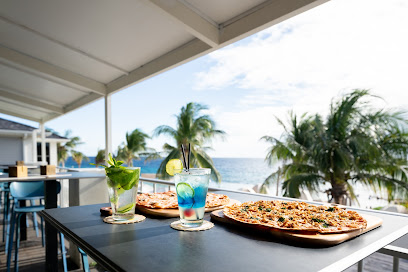
Tugboat Bar
Discover the vibrant Tugboat Bar in Willemstad, Curaçao, where breathtaking views meet delightful cocktails and a relaxing atmosphere.

Salú Restaurant & Bar
Experience a vibrant culinary journey at Salú Restaurant & Bar in Jan Thiel, Curaçao, where local flavors meet a lively atmosphere.

The World Best Mojito Bar
Experience the ultimate mojito paradise in Willemstad's vibrant Punda district, where every sip transports you to a tropical oasis.

Don's Restaurant, Bar & more
Experience authentic Caribbean flavors at Don's Restaurant, Bar & More in Jan Thiel, Curaçao – a culinary gem for food lovers.

Rilèks Beach
Discover the enchanting Rilèks Beach in Willemstad, Curaçao, a vibrant beach bar with stunning views, delicious food, and a lively atmosphere for relaxation.

Jan Thiel Beach
Experience the beauty of Jan Thiel Beach in Curaçao, where sun, sea, and adventure await you in a tropical paradise.

Papagayo Specialty Restaurant
Discover the vibrant flavors of the Caribbean at Papagayo Specialty Restaurant in Curaçao, where culinary excellence meets stunning views.

Local Phrases about Jan Thiel Beach
-
- HelloBon dia
[bon dee-ah] - GoodbyeAyo
[ah-yo] - YesSi
[see] - NoNo
[no] - Please/You're welcomePor fabor/dushi
[por fa-bor/doo-shee] - Thank youDanki
[dahn-kee] - Excuse me/SorryPardon/mi ta sori
[par-don/mee ta sore-ee] - How are you?Kon ta bai?
[kon ta bye?] - Fine. And you?Bon. I bu?
[bon. ee boo?] - Do you speak English?Bo ta papia Ingles?
[bo ta pa-pee-ah een-gles?] - I don't understandMi no ta kompronde
[mee no ta kom-pron-de]
- HelloBon dia
-
- I'd like to see the menu, pleaseMi ke mira e menu, por fabor
[mee kay mee-rah eh meh-no, por fa-bor] - I don't eat meatMi no kome karni
[mee no ko-meh kar-nee] - Cheers!Salud!
[sa-lood] - I would like to pay, pleaseMi ke paga, por fabor
[mee kay pa-gah, por fa-bor]
- I'd like to see the menu, pleaseMi ke mira e menu, por fabor
-
- Help!Yudami!
[yoo-da-mee] - Go away!Bay afor!
[bye ah-for] - Call the Police!Yama polis!
[ya-ma po-lees] - Call a doctor!Yama un dokter!
[ya-ma oon dok-ter] - I'm lostMi a keda perdi
[mee ah kay-da per-dee] - I'm illMi ta malu
[mee ta ma-loo]
- Help!Yudami!
-
- I'd like to buy...Mi ke kumpra...
[mee kay koom-prah] - I'm just lookingMi ta solamente mira
[mee ta so-la-men-te mee-rah] - How much is it?Kuantu ta esaki?
[kwan-too ta eh-sa-kee?] - That's too expensiveEsaki ta muchu karo
[eh-sa-kee ta moo-choo ka-ro] - Can you lower the price?Bo por baha e preis?
[bo por ba-ha eh preis?]
- I'd like to buy...Mi ke kumpra...
-
- What time is it?Kuantu ora ta?
[kwan-too or-ah ta?] - It's one o'clockTa un ora
[ta oon or-ah] - Half past (10)Mitad di dies
[mee-tad dee dees] - MorningMarduga
[mar-doo-ga] - AfternoonAtardi
[ah-tar-dee] - EveningAnochi
[ah-no-chee] - YesterdayAnoche
[ah-no-che] - TodayAwe
[ah-weh] - TomorrowMañana
[mah-nyah-nah] - 11
[1] - 22
[2] - 33
[3] - 44
[4] - 55
[5] - 66
[6] - 77
[7] - 88
[8] - 99
[9] - 1010
[10]
- What time is it?Kuantu ora ta?
-
- Where's a/the...?Unda ta e...?
[oon-da ta eh...?] - What's the address?Kuantu ta e adres?
[kwan-too ta eh a-dres?] - Can you show me (on the map)?Bo por mustra mi (riba e mapa)?
[bo por moos-tra mee (ree-ba eh mah-pa)?] - When's the next (bus)?Kuantu ta e siguiente (bus)?
[kwan-too ta eh see-gu-yen-te (boos)?] - A ticket (to ....)Un tiki (pa ....)
[oon tee-kee (pah ....)]
- Where's a/the...?Unda ta e...?
History of Jan Thiel Beach
-
Long before the arrival of Europeans, the Arawak Indians were the first known inhabitants of the Jan Thiel area. They lived a simple life as fishermen and farmers, utilizing the resources provided by the sea and the fertile land. Archaeological findings such as pottery shards and ancient tools provide evidence of their presence and way of life.
-
During the 17th century, the Dutch West India Company established plantations across Curacao, including the area around Jan Thiel. The region was primarily used for the cultivation of salt and aloe vera. The remains of these plantations, including old wells and stone walls, can still be seen today, offering a glimpse into the island's colonial past.
-
Jan Thiel was once a significant site for salt production, which was a major industry in Curacao during the 18th and 19th centuries. The salt pans, or 'salinas,' were crucial for the island's economy. Workers would harvest the salt by hand, a labor-intensive process that was vital for trade and preservation of food. The old salt pans are now part of the Jan Thiel Lagoon, a protected area that offers a habitat for various bird species.
-
During World War II, Curacao played a strategic role due to its oil refineries. Jan Thiel Beach and its surroundings were fortified to protect against potential attacks. The remnants of military bunkers and installations can still be found in the area, serving as a reminder of the island's involvement in global conflicts.
-
In the latter half of the 20th century, Jan Thiel Beach transformed from a quiet coastal area into one of Curacao's premier tourist destinations. Modern resorts, restaurants, and recreational facilities have been developed, attracting visitors from around the world. Despite this development, efforts have been made to preserve the natural beauty and historical significance of the area.
-
Jan Thiel Beach is not only a popular tourist spot but also a place of cultural importance for the local community. Traditional events and festivals, such as fish markets and music performances, are regularly held at the beach, celebrating Curacao's rich cultural heritage. The blend of African, European, and indigenous influences is evident in the local cuisine, crafts, and music.
Jan Thiel Beach Essentials
-
Jan Thiel Beach is located on the southeastern coast of Curacao, approximately 20 minutes by car from Willemstad, the capital city. The nearest airport is Hato International Airport (CUR), about 30 minutes away by car. From the airport, you can rent a car, take a taxi, or use shuttle services provided by some hotels to reach Jan Thiel Beach. Public buses are also available but may require multiple transfers.
-
While in Jan Thiel Beach, getting around is relatively easy. Renting a car provides the most flexibility, especially if you plan to explore other parts of the island. Taxis are available and can be hailed or booked in advance, but they can be expensive. Public buses run to and from Willemstad, but schedules may be irregular. Many resorts and hotels offer bike rentals, and the area is also pedestrian-friendly with many attractions within walking distance.
-
The official currency of Curacao is the Netherlands Antillean Guilder (ANG), but U.S. dollars are widely accepted. Credit and debit cards are commonly used, especially in hotels, restaurants, and larger stores. ATMs are available in the Jan Thiel Beach area, dispensing both ANG and USD. It's advisable to carry some cash for smaller establishments or for tips.
-
Jan Thiel Beach is generally considered safe for tourists, but it's important to take standard precautions. Avoid leaving valuables unattended on the beach and be cautious when withdrawing money from ATMs. While the area is safe during the day, it is advisable to avoid walking alone at night in poorly lit areas. Be aware of your surroundings and keep an eye on your belongings in crowded places.
-
In case of an emergency, dial 911 for immediate assistance. There is a police station in the nearby area of Willemstad, and medical facilities are accessible within a short drive. Many hotels and resorts have first-aid kits and personnel trained in basic medical care. It is recommended to have travel insurance that covers medical emergencies. For minor health issues, pharmacies are available in the area where you can purchase over-the-counter medications.
-
Fashion: Do wear lightweight, breathable clothing suitable for a tropical climate. Swimwear is appropriate at the beach but cover up when leaving the beach area. Religion: Do respect local customs and traditions, although Curacao is generally tolerant and diverse. Public Transport: Do be patient, as public buses may not always run on a strict schedule. Don’t eat or drink on public transport. Greetings: Do greet people with a smile and a friendly 'Bon Dia' (Good Day). Eating & Drinking: Do try local dishes and be open to new culinary experiences. Don’t refuse an invitation to dine, as it may be considered impolite.
-
To experience Jan Thiel Beach like a local, visit the local markets and try fresh seafood and island-grown produce. Engage with locals who can offer valuable insights and recommendations. Don't miss the sunset from one of the beachside bars or restaurants, a favorite pastime among residents. For a unique experience, take a snorkeling trip to the nearby Tugboat Wreck, a popular local spot.
Trending Landmarks in Jan Thiel Beach
-
Queen Emma Bridge
-
Mambo Beach
-
Cas Abao Beach
-
Curaçao Sea Aquarium
-
Mambo Beach Boulevard
-
Kokomo Beach
-
Zanzibar Beach & Restaurant
-
Landhuis Chobolobo
-
Pirate Bay Curaçao Beach Club and Restaurant
-
Hato Caves
-
Livingstone Jan Thiel Resort
-
Chogogo Dive & Beach Resort Curacao
-
Shete Boka National Park
-
Fort Nassau
-
Irie Tours
Nearby Cities to Jan Thiel Beach
-
Things To Do in Julianadorp
-
Things To Do in Sint Michiel
-
Things To Do in Barber
-
Things To Do in Soto
-
Things To Do in Sabana Westpunt
-
Things To Do in Westpunt
-
Things To Do in San Nicolas
-
Things To Do in Savaneta
-
Things To Do in Santa Cruz
-
Things To Do in Pos Chiquito
-
Things To Do in Paradera
-
Things To Do in Sero Blanco
-
Things To Do in Tanki Leendert
-
Things To Do in Oranjestad
-
Things To Do in Noord









